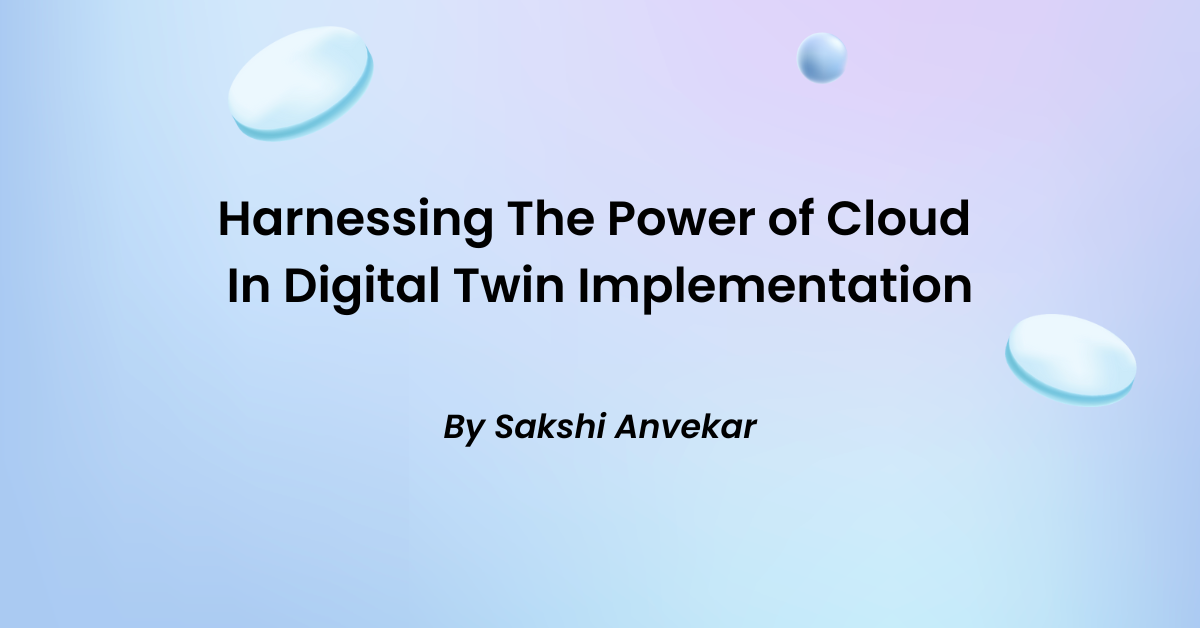Businesses’ approaches to product design, development, and maintenance have evolved. They have moved away from implementing test case scenarios on physical prototypes to Digital Twins.
But here’s an interesting fact: Digital Twin Technology has been around for much longer than most people realize. Since NASA began using system simulators on spacecraft, digital twins have existed. Engineers were able to run simulations and troubleshoot problems remotely after receiving updates from the physical craft. Since then, technology has advanced, and Internet of Things (IoT) devices now include sensors that provide real-time data on equipment performance.
Why Businesses are moving to Digital Twin?
Digital twin technology is gaining traction in a variety of industries as it enables businesses to create virtual replicas of electronic systems, processes, and products. Digital twins can aid in the real-time optimization and improvement of these systems, lowering costs and increasing efficiency, businesses can learn more about their performance, streamline productivity, and reduce costs.
A digital Twin’s implementation, however, can be a complicated and resource-intensive approach that demands a lot of computing power and storage. This is where the power of digital twin technology can be effectively utilized coupled with cloud computing, which delivers a scalable and affordable solution.
In this blog, we’ll discuss how businesses could use cloud computing to embrace digital twins, achieve their targets, and transcend greater heights.
Digital Twin and SystemC, both technologies are used in the field of computer engineering and simulation. A digital twin is a virtual replica of a physical system or process that is used to monitor, analyze, and predict its performance. It can be used to improve the efficiency, productivity, and reliability of a physical system. On the other hand, SystemC is a modeling language used for designing and simulating electronic systems and hardware. It is a C++-based language that supports the modeling of concurrent processes and communication between them.
This allows engineers to simulate complex systems and analyze their behavior before they are physically built. By connecting Digital Twin and SystemC, engineers can create a virtual representation of an electronic system or hardware and use it to monitor and optimize its performance. This can lead to more efficient and effective design and development processes, as well as improved system performance and reliability.
The integration of cloud computing technology with SystemC:
This concept has revolutionized the way organizations manage their assets and processes. However, the digital twin generates massive amounts of data, which can be challenging to store, process, and analyze using traditional methods. This is where cloud computing comes in, as it offers scalable, secure, and cost-effective solutions for data storage and processing.
By connecting the digital twin with the cloud, organizations can access real-time data, optimize their operations, and improve decision-making processes.
Cloud computing allows for the deployment of System C models and simulations on remote servers, which can be accessed and executed from anywhere in the world with an internet connection. This provides a flexible and scalable platform for designers and engineers to collaborate and test their System C-based designs without the need for expensive on-premises infrastructure. Furthermore, the use of cloud-based System C simulations can significantly reduce the time and cost associated with traditional hardware prototyping, leading to faster product development cycles and more efficient design processes. As a result, the integration of System C and cloud technologies have become an increasingly popular choice for digital system design and verification in modern times
For example, cloud-based platforms such as Amazon Web Services (AWS) and Microsoft Azure provide virtual machine instances that can be configured to run System C simulations, allowing users to simulate and verify their designs without the need for on-premises hardware. To take advantage of cloud-based System C simulations, designers can use software tools such as SystemC Transaction Level Modeling (TLM) library, which provides a set of reusable components and templates for modeling and simulating digital systems.
By leveraging cloud-based resources and services, designers can accelerate the design process, reduce costs, and collaborate more effectively with other designers and engineers around the world.
Cloud computing provides a scalable and cost-effective platform for implementing digital twins and their benefits include:
- Scalability: Digital twins generate large volumes of data, requiring significant computational power and storage. Cloud computing enables organizations to scale their computing and storage resources up or down as needed, without the need for significant upfront investment in hardware and infrastructure.
- Cost Savings: Cloud computing can significantly reduce the cost of digital twin implementation. By leveraging cloud-based services, organizations can avoid the need for expensive hardware and infrastructure investments. In addition, cloud computing enables organizations to pay only for the computing and storage resources they need, reducing overall costs.
- Collaboration: Digital twin implementation often involves multiple stakeholders, including engineers, data scientists, and business leaders. Cloud-based platforms can provide a centralized repository for data and models, facilitating collaboration and knowledge sharing.
- Flexibility: Cloud computing provides organizations with the flexibility to choose the computing and storage resources they need.
- Permits early exploration of system-level design trade-offs, system-wide verification, risk reduction, and rapid verification.
Cloud computing, Digital Twin in Automotives:
Now that we are aware of cloud computing and digital twins, let’s analyze their use in the automotive sector.
The advent of electric vehicles was accompanied by the electronification and integration of software components into automobiles. As automobiles become more electronic, digital twins are being used for more rapid and effective development. A typical car today is somewhere between 50 and 100 electronic control units (ECUs), which enable features like automated emergency braking, pedestrian identification, blind spot and lane departure warnings, adaptive cruise control, etc.
From tiny microcontrollers to microcomputers, these functionalities are offered by a wide range of components. The design philosophy behind all of these interrelated components resembles a mobile data center. One of the major purposes of the major players in this market at the moment is to use the cloud for design, development, validation, and—most importantly—deployment. The trend we’re referring to is the one in which we anticipate the emergence of cloud computing and a digital twin as cutting-edge technologies that complement one another.
As we learned more about what a “digital twin” or “virtual model” is and how it may speed up product development by removing bottlenecks, we recognized that this was information we needed to be aware of.
Conclusion:
Organizations can use digital twins as a potent tool to drive efficiency, cut costs and enhance product design. Digital twin implementation, however, can be a time- and resource-consuming procedure. Organizations can adopt digital twins on a scalable and affordable platform thanks to cloud computing, allowing them to make use of this technology’s potential without having to make a substantial initial investment in infrastructure and hardware. Organizations can accomplish their goals and improve their position in the market by utilizing cloud-based services in integration with System C to create Digital Twins.
Connect with us to know more about what we are doing in the space of Digital Twin. Alternatively, you can also write to us at sales@vayavyalabs.com

